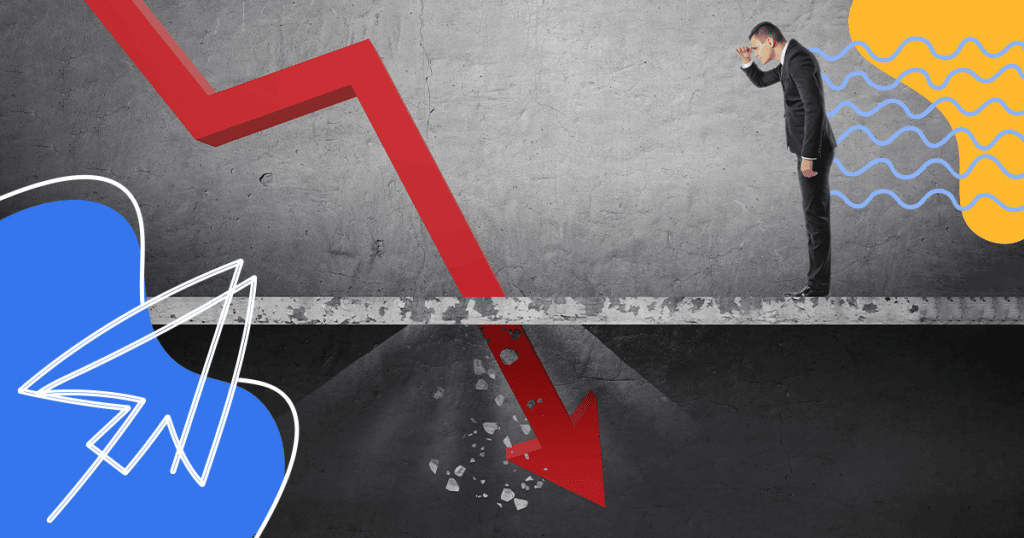To have a successful website, you must make sure you have a steady, high flow of organic traffic day in and day out.
Without organic traffic, there’s no guarantee anyone is looking at your website or any relevant products.
The problem is that, even if you’ve developed a steady stream of visitors, you might notice a sudden drop in website traffic.
Fortunately, there are some simple ways to diagnose drops in website traffic. Knowing why your website visitors are now dwindling is the first step towards recovering your visitors and page popularity.
Below are some of the most common reasons for a sudden drop in website traffic.
1. Updates from Google Algorithm
If you run a website, chances are you’re trying to rank in Google’s search rankings. However, this means being at the mercy of Google’s algorithm, which is constantly changing.
In fact, according to Google themselves, there are updates made daily to improve searcher experience, and “core updates” that are significant are done several times a year.
This algorithm pairs users with the search result that best suits their needs, and knowing how to use proper search engine optimization makes all the difference when getting your article to rank.
Despite your best SEO efforts, Google might still change its algorithm completely.
These changes are highly private, and Google is very secretive about the specific changes they make to their algorithm.
So to find out if an algorithm has changed, look for press releases and confirmed changes released by Google.
You can also check websites such as Moz or SEMrush Sensor. These websites give you updates on Google’s algorithm changes.
2. You’ve Set a Nofollow/Noindex Code
You’ve heard of being able to block someone on social media, but did you know that you can also block your own pages from Google Search Rankings?
The way this works is you, your web designer, or web developer include a “nofollow/noindex” code into your robots mega tag.
What this does is prevent Google from indexing your webpage, therefore stopping users from seeing your web page in its rankings.
There are certain instances where this is useful, such as:
- Preventing duplicate content, such as from an author’s page and your blog page.
- Preventing users from getting confused during searches by landing on a useless page, such as a login page for your team.
- Using it as a template when you hire a web designer to develop, re-design, or create your website.
However, if you do want to publish your content and continue to have it indexed, leaving this nofollow/noindex code or accidentally checking the box in WordPress that states “Do not index this page” can all prevent Google from indexing your page and dropping organic traffic.
Make sure to remove the nofollow code as soon as possible if you notice this problem shortly after you’ve redesigned or relaunched your website.
3. Low-Quality Content
Creating content on your webpage is one of the best ways to attract visitors to your page, and can be highly effective at growing your customer base.
In fact, content marketing is one of the best ways to market your business with little investment through high-quality content.
Unfortunately, some bloggers or companies might get carried away with creating content, leading to the creation of low-quality articles that are low in word count and not useful to web users.
Google knows to turn users away from websites with low-quality content.
Therefore, it’s important to continue to create content that is well-researched, uses SEO principles, and continues to provide important information for users.
If you’ve experienced a sudden drop in website traffic, consider auditing your content and removing blog posts that aren’t useful.
4. Misplaced Tracking Codes
Tracking Codes are special lines of text placed in a webpage’s HTML or Sourcecode that can be synced with Google Analytics to:
- Track key performance indicators, also known as KPIs.
- Track website traffic.
- Measure click to buy numbers.
- Analyze other user activities.
Tracking codes must be placed in a certain part of a webpage’s HTML code, and changes are constantly made as to where these codes should be placed.
If you’re a novice and don’t have a lot of HTML or JavaScript knowledge, you might see a sudden drop in web traffic if you’ve mistakenly placed a tracking code somewhere else.
However, even the most seasoned webmasters and designers make mistakes and might have placed the tracking code somewhere else.
Therefore, it’s important to fix this issue and the code as soon as possible. The longer you take to fix it, the more lost valuable analytics.
5. Linking to Dead Links or PBN
If you’re a new website designer or have started your own webpage, you might be enthusiastic to add links upon internal links into your online content.
While link building is an important part of website design, it can also be detrimental to your search rankings. Particularly, if your website includes links that:
- Are no longer relevant
- Are broken
- Have outdated content
- Link to a PBN
Google can penalize you and remove your website from its search rankings.
A PBN is also known as a private blog network. These are, in essence, shell websites that are used solely for the purpose of increasing your link network and (in theory) your search rankings.
On the contrary, Google has now picked up on this trend and will serve you a penalty for linking to websites using a PBN.
It’s best to stay away from PBNs altogether and follow the advice from only experienced and reputable SEO consultants and web designers.
In addition, you should also take the time to investigate your links and check to see if the traffic dropped on a page with an expired link.
There are tools to help you do this, such as Sitechecker and SEMrush. Then, delete these links or replace them with ones that work.
6. Over-Optimization
Inserting keywords into your content is incredibly important to help improve your organic traffic.
However, it can also cause Google to view your website as too geared toward marketing and not enough on user experience, organization, and information.
To put it shortly, over-optimization leads to lower search rankings. It’s important to use the right balance of keywords and best SEO practices.
When creating content, use a content creator such as Clearscope or SurferSEO to help you understand how many keywords to use, the number of keywords to use, and how long your content article should be.
7. Outdated Keywords
Google is now changing the way it gives users information by providing them with results that they search using more natural language.
That is to say, most users aren’t searching for “High-quality television repair,” but might be searching for “best TV service” when looking for their next repair job.
This is just one example of how natural language is being used more often by users, and how websites must keep this in mind when creating their content.
If you’ve experienced a drop in web traffic, consider creating new content with updated keywords to improve your search rankings, as well as help users find what they’re looking for.
8. Not Optimizing for SERP Layout
SERP stands for Search Engine Results Page, and the SERP page is particularly important when talking about Google rankings.
There have been major recent changes to the SERP layout, including the addition of “rich snippets” that are now, oftentimes, the first result featured on Google’s SERP.
Unfortunately, you might have once ranked well for a keyword, but another page has come along that has included a rich snippet, graph, or another image that Google found desirable and placed atop its SERP layout.
Make sure to improve your website’s rankings by implementing changes that coincide with the new SERP layout, such as:
- Using bold text to directly answer a question in a straightforward manner.
- Using bulleted lists that provide valuable information for a specific question.
- Inserting a useful graph or image into your content.
9. Migration Issues
If you’ve redesigned your webpage and are transitioning it onto another platform, it’s important to keep SEO as a priority during the transition phase.
For instance, you never want to remove content that was perfectly optimized and driving your traffic forward.
Removing optimized content can prove to be a fatal flaw and lead to a sudden drop in website traffic fast.
In addition, you might have also experienced issues such as lost links, broken links, and crawl errors thanks to your new website migration.
It’s important to use the help of professional web designers when transitioning your content to a new page.
Have a transition plan ready to prevent issues such as crawl errors and redirects, which can prevent you from getting the organic traffic you once had.
10. Slow Website Speed
Website speed is perhaps the most important part of your overall website success.
In fact, a new study showed that 53% of users abandon a website on their mobile device if it takes more than 3 seconds to load.
This is critical, since Google ranks their sites based on SEO as well as web speed.
Do a web speed test and make sure to fix any issues that could cause your web speed to dwindle, such as:
- Too much overhead in your site.
- Your CSS is not optimized.
- Putting too many or larger media files on your site.
- Including too many plugins.
There are many reasons behind a sudden drop in website traffic, so make sure you are constantly monitoring your numbers.
And if you want to discover the best tips to boost your traffic this year, click on the link and read this special article on our blog!




![[ROCK NA] [EBOOK SEO] Complete Guide](https://rockcontent.com/wp-content/uploads/2024/06/banner_Search-Engine-Optimization.png)






